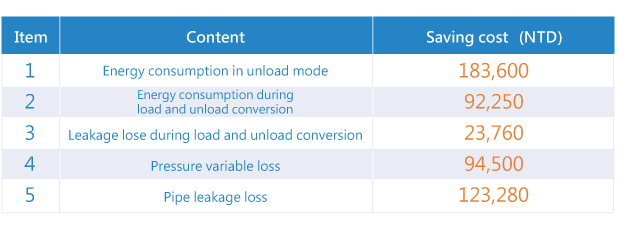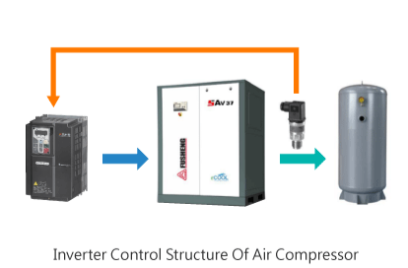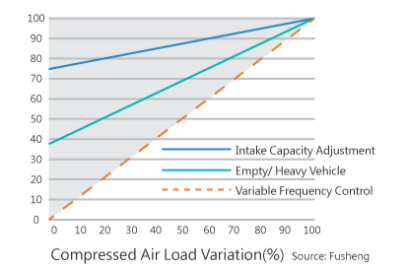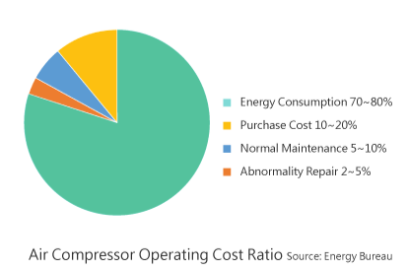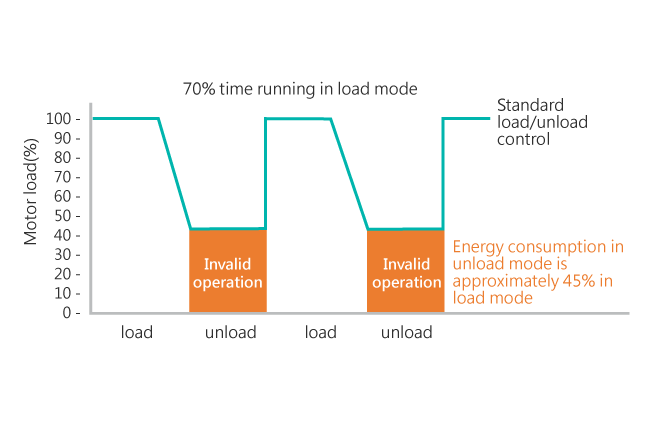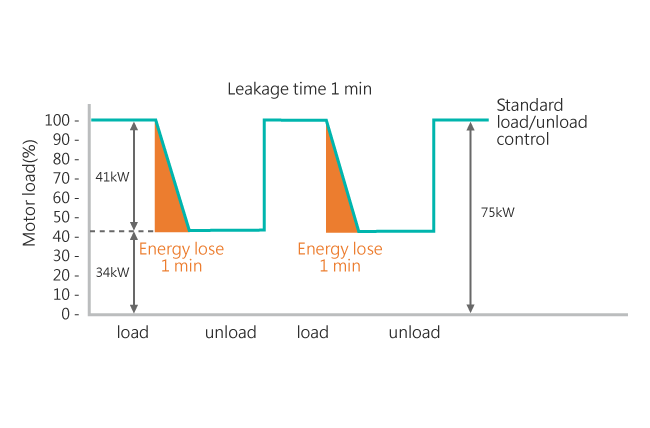Energy Saving Solution for Air Compressor
Energy Saving Solution for Air Compressor
In the industry, many manufacturing processes highly depend on air compression applications. Additionally, power consumption is also a matter of concern.
In the past, the power consumption of the air compressor was reduced by installing the drive.
Now, the air compressor adopts a high-efficiency permanent magnet motor or a high-efficiency motor and installs a drive to achieve maximum energy savings.
Execute PID control through the pressure sensor feedback. Follow the variations in compressed air loading to automatically adjust electricity consumption and output displacement, maintaining stable pressure control that can achieve a cost reduction of 45%.
Advantage
1. Reduce the unload time
In the unload state, the compressor continues to run, but there is no air being compressed. It’s an invalid operation; meanwhile, it still wastes 45% of electric energy.
2. Reduce energy consumption during load and unload conversion
Air leakage during load and unload conversion can cause approximately 1 minute of energy consumption.
3. Reduce the pressure variability
The PID function can effectively control the system pressure within ±0.1 bar .
When the pressure is reduced by 1 bar, it can result in a 6% to 8% reduction in energy consumption.
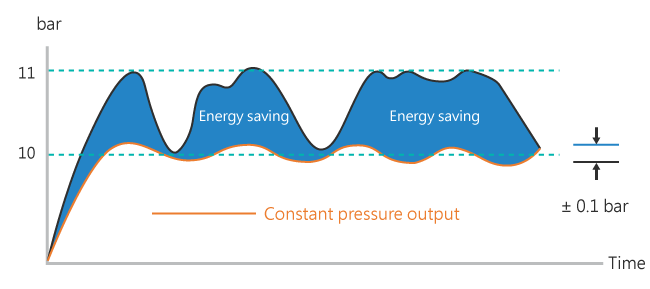
4. Reduce pipe leakage loss
The average compressed air system leaks 20% to 30% of air.
When the system pressure is reduced by 1 bar, it can effectively reduce air leakage by 10%.
5. Reduce mechanical wear
Different from traditional control, variable frequency control adjusts the air displacement by motor speed. This reduces mechanical wear and maintenance costs, extending the lifetime and efficiency of the mechanical components.
6. Soft start
Variable frequency control reduces the starting current compared to direct starting or Y-delta starting, extending the lifetime of the compressor.
7. Variable frequency air compressor total energy saving benefit
Taking a 100HP compressor operating in unload mode for 30% of the time, operating for 6000 hours, and using an electricity rate of 3NT as an example, the energy saving benefit is shown below. It is expected to reduce expenditures by 500,000 NT per year by using variable frequency control. With the anticipated increase in energy prices in the future, the cost savings will be even greater.
